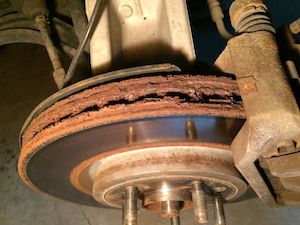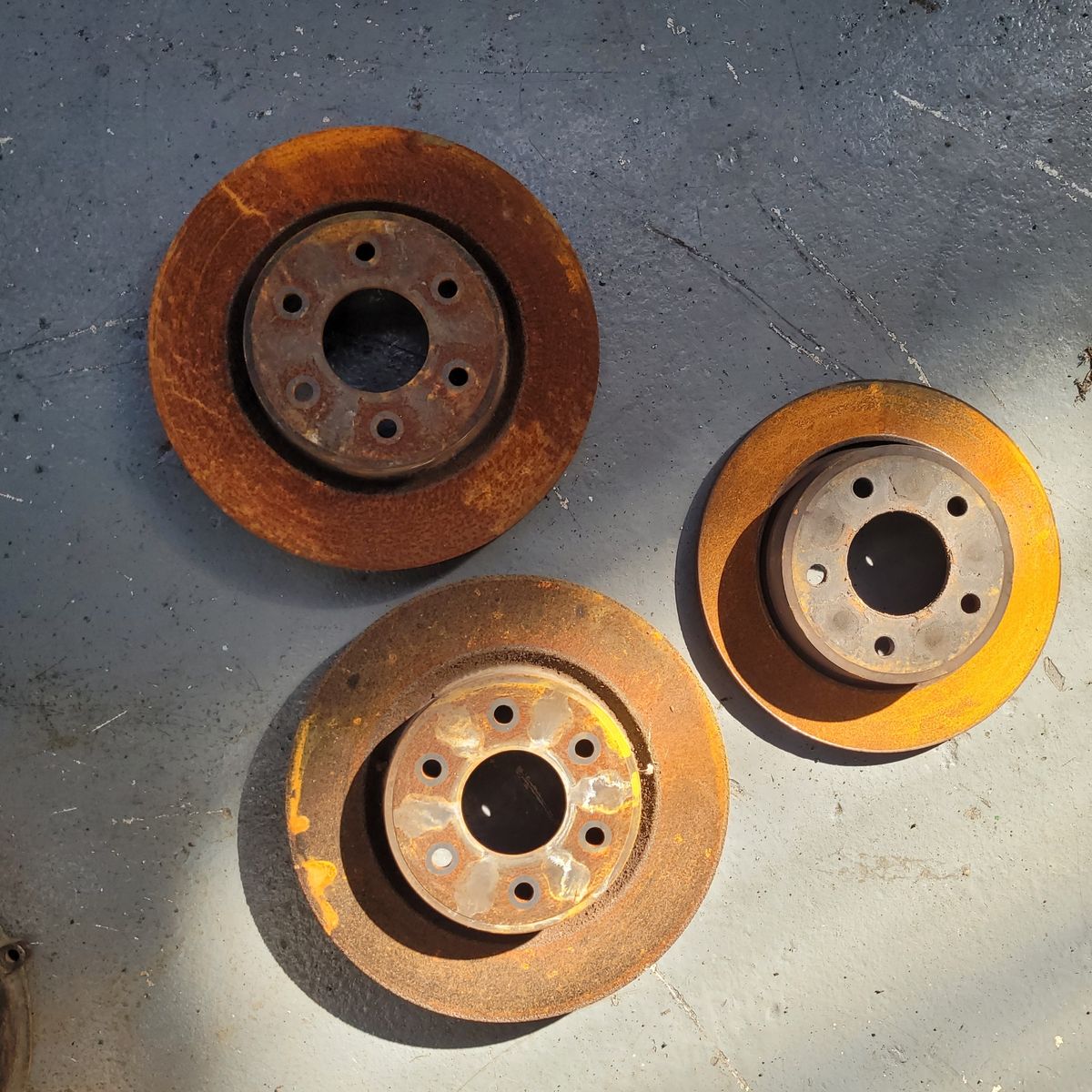If you bring your car in for a brake check, most folks reckon it’s just about the pads, shoes, or maybe a leaky master cylinder. But there’s another bit that cops a hiding, especially in our good old Hamilton conditions – the brake discs (or rotors). You probably wouldn’t get far without ’em. And if they get rusted up or worn out, you’ll notice real quick in traffic, whether you’re crawling through Te Rapa on a rainy Monday or inching along Peachgrove Road past the shops. Let’s have a yarn about what’s actually going on with those discs, and why you’ll want to keep them sorted.
What actually are brake discs and rotors?

A rusty brake disc.
Right, so your brake discs are those solid bits of metal inside your wheels. The pads clamp onto them whenever you hit the picks, turning your forward motion into a bit of friction and, hopefully, a nice smooth stop. No rotors, no stopping – simple as that.
Want the nitty-gritty on how disc rotors work? There’s a good breakdown over here if you’re keen on the technical stuff.
Types of brake disc rotors: drilled vs slotted
On the hoist we see heaps of different setups, but here’s the basics:
Drilled Rotors: These have little holes right through them. You’ll often spot them on sporty stuff like the odd Peugeot or a Honda Accord Euro. The main benefit is they let off heat and water – handy on a drizzly Dinsdale shortcut or after ploughing through a puddle coming into Nawton.
Slotted Rotors: These have lines machined into the face – not all the way through, just grooves. Plenty of utes and wagons running around Morrinsville or Cambridge use them. They help sweep dust and water away, and can manage a bit of heat too, which is great with all the Hamilton stop-start driving (think Ulster Street on a school morning).
Why do the rotors rust anyway?
The metal they’re made from, usually steel, isn’t a fan of NZ weather. Especially parked up all night in the fog down in Tamahere, or during those humid Hamilton summers. Two main things cause dramas:
Moisture: Basically, if the car’s been parked up in the wet – under a tree in Rototuna, or even down at the airport for a week – you’ll get some rust forming. A bit of surface rust is normal; it’ll usually rub off next time you drive. But leave it sitting too long? That light rust turns into heavy corrosion, and that’s when you get pitting or serious wear that can fail your next WOF in Hamilton.
Abrasion: Once rust’s got a hold, every time you brake you’re scraping the pads over rough metal. Road grit, stones from the Expressway, or any debris picked up near Huntly or Ngaruawahia will grind away at the rotor, eating into the metal. Less protective coating means faster rust, so it’s a vicious cycle.
When do you need new rotors?
Look, a tiny bit of rust after a wet night isn’t the end of the world – your brake pads will likely clean it off after a trip down Wairere Drive or over the Whitiora bridge. But if your car’s been sitting for yonks, or you start hearing scraping or feel vibration when stopping, it’s time for a look. Once that rust has eaten into the metal or you’ve got proper grooves, they need to be machined or replaced. It’s a safety thing, not just a tick-box for compliance. Dodgy brake rotors can absolutely stuff your stopping distance – not what you want dodging potholes near Glenview or negotiating roundabouts in Chartwell.
If you’re curious about other reasons your discs might be damaged (it’s not all rust!), have a look here.
Need brake disc or rotor repairs in Hamilton?
Notice rust, juddering, or weird scraping when you slow down – especially in your Mazda Atenza, Toyota Vitz or even those rare Suzuki Swifts and Volkswagen Polos? Don’t muck about. Brakes aren’t worth gambling over, and a failed WOF can be a pain. Our team at Grimmer Motors will get you sorted fast and friendly, whether you’re heading back out to Matangi, or you’ve just dropped the kids off in Fairfield. Give us a bell, book a car service, and let us keep your brakes in top nick.

